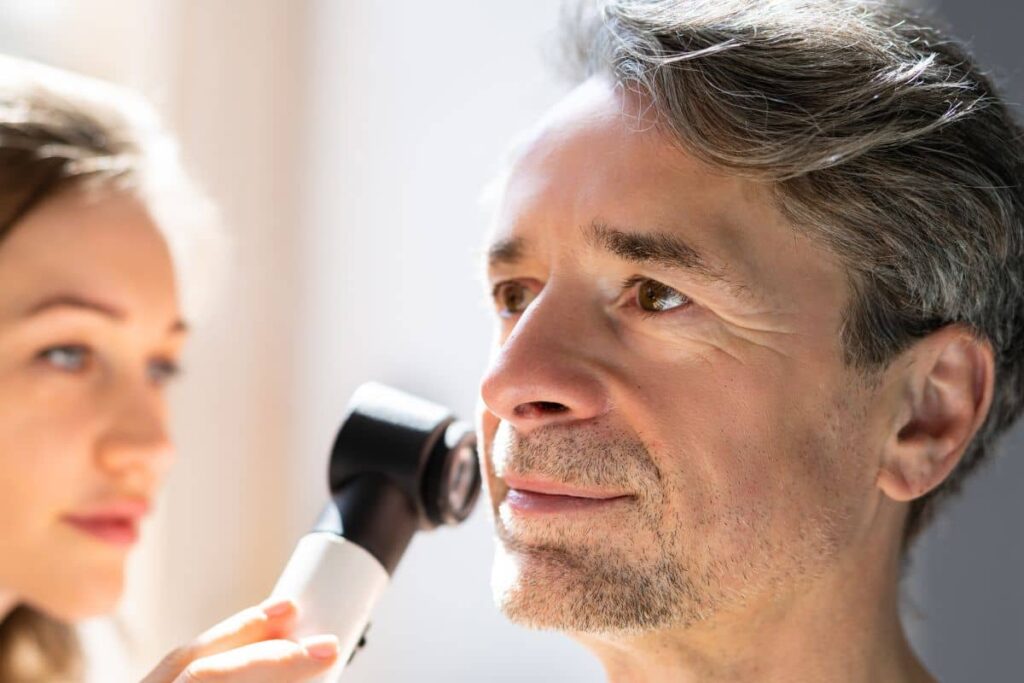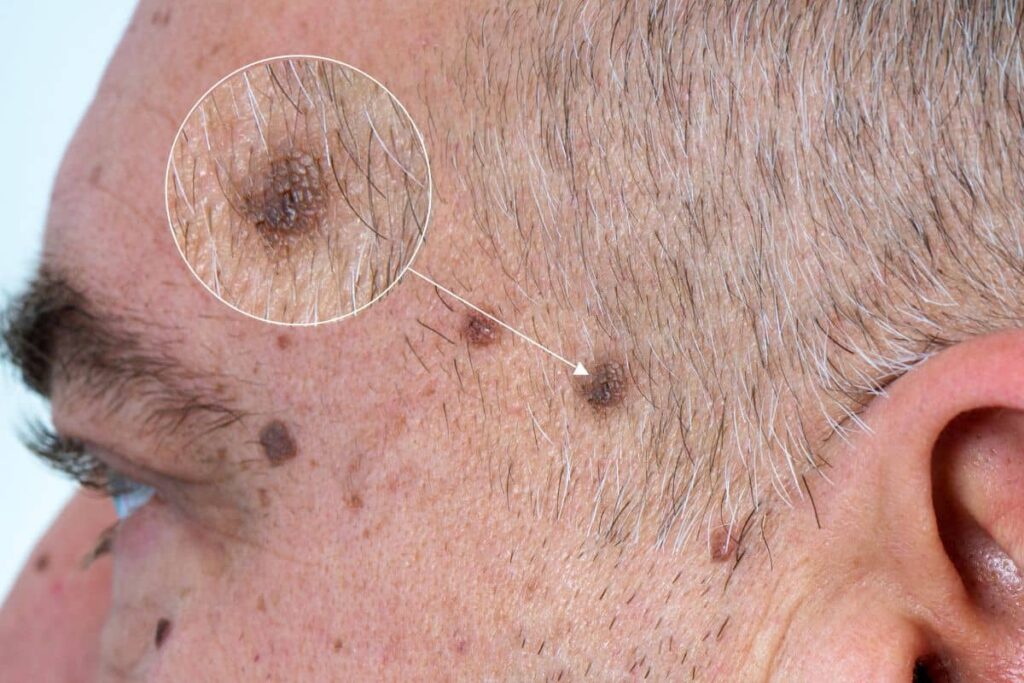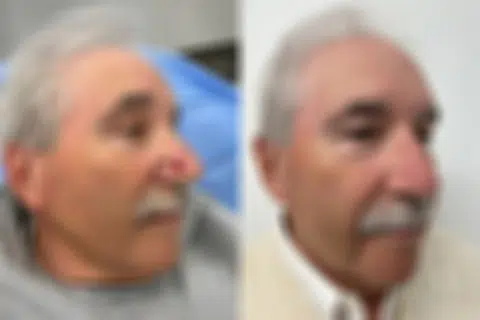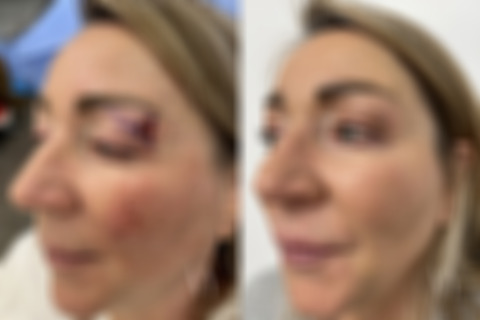Is Recurrence Possible After Skin Cancer Reconstruction?
Posted by Dr. Alisa Yamasaki

If you’ve had skin cancer removed from your face—especially with techniques like Mohs surgery—you may wonder: can skin cancer come back after being removed? The short answer is yes, recurrence is possible. Even when reconstruction is successful and the margins are clear, some skin cancers may return in the same area or appear elsewhere on the skin.
Facial skin cancer reconstruction is a powerful way to restore form and function after cancer removal. But it’s also important to understand the risks involved after surgery, especially if you’ve had basal cell carcinoma (BCC), squamous cell carcinoma (SCC), or melanoma. While recurrence is not always common, it can happen—and staying informed is one of the best ways to protect your long-term health.
Let’s break down the types of skin cancer most likely to recur, why recurrence might happen even after successful surgery, and what signs to watch for after reconstruction. You’ll also learn how to lower your risk, what your treatment options are, and why choosing a facial reconstruction expert like Dr. Alisa Yamasaki in Princeton, Hillsborough, or Yardley can make all the difference.
What to Remember After Skin Cancer Reconstruction
- Skin cancer can return even after complete removal and reconstruction.
- Basal and squamous cell carcinoma have recurrence risks, especially in high-risk areas.
- Clear margins reduce risk but don’t guarantee recurrence won’t happen.
- Regular follow-ups and early detection are key to long-term outcomes.
- Expert reconstruction can help restore appearance while maintaining close surveillance.
Types of Skin Cancer and Their Recurrence Rates
There are three main types of skin cancer commonly treated with facial reconstruction: basal cell carcinoma, squamous cell carcinoma, and melanoma. Each has its own recurrence patterns and risks.
Basal Cell Carcinoma (BCC)
Basal cell carcinoma is the most common skin cancer in the U.S. It rarely spreads but can grow deep into tissues and bone if not removed. BCC recurrence is possible, especially if the cancer was aggressive or located in a high-risk area like the nose, ears, or around the eyes.
- According to the American Society of Plastic Surgeons, the recurrence rate for BCC after Mohs micrographic surgery is about 1–3% over five years.
- Factors like incomplete removal, aggressive subtypes, or immune suppression can increase the risk.
- BCC recurrence is typically local, occurring in or near the original site.
Squamous Cell Carcinoma (SCC)
Squamous cell carcinoma is the second most common skin cancer and carries a higher risk of spreading compared to BCC.
- Recurrence rates for SCC are around 3–8% after Mohs surgery, depending on location and tumor size.
- SCC that invades deeper layers or appears on the lips, ears, or scalp may have higher recurrence potential.
- Some SCCs can metastasize to lymph nodes, requiring more extensive follow-up.
Melanoma
Melanoma is less common but more dangerous. It can spread quickly if not caught early.
- Recurrence rates vary widely based on the depth of the tumor and whether lymph nodes were involved.
- While Mohs surgery is not always the standard treatment, it may be used for some thin melanomas.
- Follow-up is critical, as melanoma can recur locally, regionally, or in distant organs.
Recurrence vs. New Skin Cancer: What’s the Difference?
A recurrence is when the same skin cancer returns in or near the original site. A new skin cancer, on the other hand, develops in a different area and may be a different type.
Patients who’ve had skin cancer once are at higher risk of developing another skin cancer later, which may not be related to the first one. Distinguishing between recurrence and new cancer is key to understanding prognosis and choosing the right treatment.

Risk Factors: Why Skin Cancer Can Come Back After Surgery or Reconstruction
Skin cancer can recur even after complete removal and clear surgical margins. Here’s why:
- Microscopic cells: Cancer cells not visible under the microscope may remain near the area.
- Aggressive tumor types: Some tumors grow in unpredictable patterns or have infiltrative margins.
- Histopathologic challenges: Some cancers are harder to interpret under the microscope, especially eccrine carcinoma or other rare variants.
- Immune factors: A weakened immune system may allow for regrowth.
- Environmental exposure: Continued UV exposure or other risk factors can contribute to recurrence.
If My Margins Were Clear, Why Would Skin Cancer Come Back?
Clear margins mean that no cancer cells were seen at the edge of the removed tissue. But it doesn’t always mean all cancerous cells were eliminated. Microscopic extensions of the tumor can sometimes go undetected, especially in cancers with aggressive or irregular growth patterns. Additionally, in some cases, the area around the tumor might have been affected by sun damage, leading to a “field” of potential cancer cells.
Your face deserves the highest level of care
Explore your reconstruction options with a facial plastic surgeon who understands both function and aesthetics.
Signs and Symptoms to Watch for After Reconstruction
Being familiar with the warning signs can help detect recurrence early. Here’s what to look for:
- New lumps, bumps, or lesions near the surgery site
- Redness, ulceration, or scabbing that doesn’t heal
- A growing or changing mole, especially if pigmented
- Persistent itching, tingling, or discomfort at the site
- A change in the appearance or texture of your surgery scar—even years later

While it’s rare, skin cancer can return in the exact area where it was previously removed—even after reconstruction. That’s why it’s important to monitor the reconstructed site over time, especially in high-risk cases. In some instances, recurrence can be slightly harder to detect beneath skin that’s been reconstructed with grafts or flaps, as the tissue may look or feel different than surrounding skin. However, having reconstruction does not increase your risk of recurrence on its own. What matters most is ongoing surveillance, early detection, and working with a specialist who is experienced in both reconstruction and post-surgical monitoring.
Tips to Lower Your Skin Cancer Risk of Recurrence
While no approach is foolproof, there are ways to reduce the risk of skin cancer coming back:
- Sun protection: Use sunscreen daily, wear hats and sunglasses, and avoid tanning beds.
- Routine follow-ups: See your doctor for regular skin checks, especially in the first few years.
- Avoid smoking: Tobacco use can impair healing and immune response.
- Use skincare wisely: Retinol on skin is often used to promote cellular turnover, but should be used under guidance from your provider.
- Stay informed: Know your personal and family risk factors, and share them with your doctor.
Treatment Options if Skin Cancer Comes Back After Surgery
If recurrence happens, treatment depends on the cancer type, location, and depth. Common options include:
- Repeat Mohs surgery: Often the best option for localized BCC or SCC.
- Micrographic surgery: Offers high cure rates with tissue preservation.
- Excision: May be used for non-recurrent or easily defined lesions.
- Lymph node evaluation: Necessary if the cancer shows signs of spreading.
- Radiation or chemotherapy: Used in advanced or inoperable cases.
- Targeted therapies: Especially useful in advanced melanoma.
 Explicit content – Discretion advised.
Explicit content – Discretion advised.
 Explicit content – Discretion advised.
Explicit content – Discretion advised.
Why Choosing the Right Specialist Matters
Dr. Alisa Yamasaki is a double board-certified facial plastic surgeon with advanced experience in skin cancer reconstruction. She specializes in techniques that prioritize both facial function and natural-looking results. Her Princeton, Hillsborough, and Yardley offices offer state-of-the-art care in a compassionate setting.
Patients choose Dr. Yamasaki for her:
- Dual expertise in facial aesthetics and reconstructive surgery
- Meticulous approach to both form and function
- Emphasis on patient education and follow-up care
- Collaborative relationships with dermatologists and oncologists
Whether you’ve already had skin cancer removed or are monitoring for recurrence with your dermatologist, expert reconstruction and follow-up care make all the difference.
When to Schedule an Appointment
If you’ve noticed new skin changes, are concerned about your healing after Mohs, or simply want peace of mind, don’t wait. Early evaluation can prevent complications and improve outcomes. Dr. Yamasaki welcomes both new and returning patients in Princeton, NJ, Hillsborough, NJ, and Yardley, PA.
Call now to schedule a consultation and take the next step in protecting your skin health.
FAQs About Skin Cancer Recurrence After Reconstruction
Most patients should see their dermatologist or surgeon every 3–6 months for the first two years. After that, annual skin checks are typically recommended. Your schedule may vary based on your cancer type and individual risk factors
Not necessarily. Advances in reconstructive techniques allow surgeons to revise or minimize additional scarring. However, early detection can limit the extent of any future procedures.
Yes, recurrence is still possible years after surgery, especially for aggressive cancers like melanoma. If you notice new or changing lesions—even decades later—it’s important to get them checked.